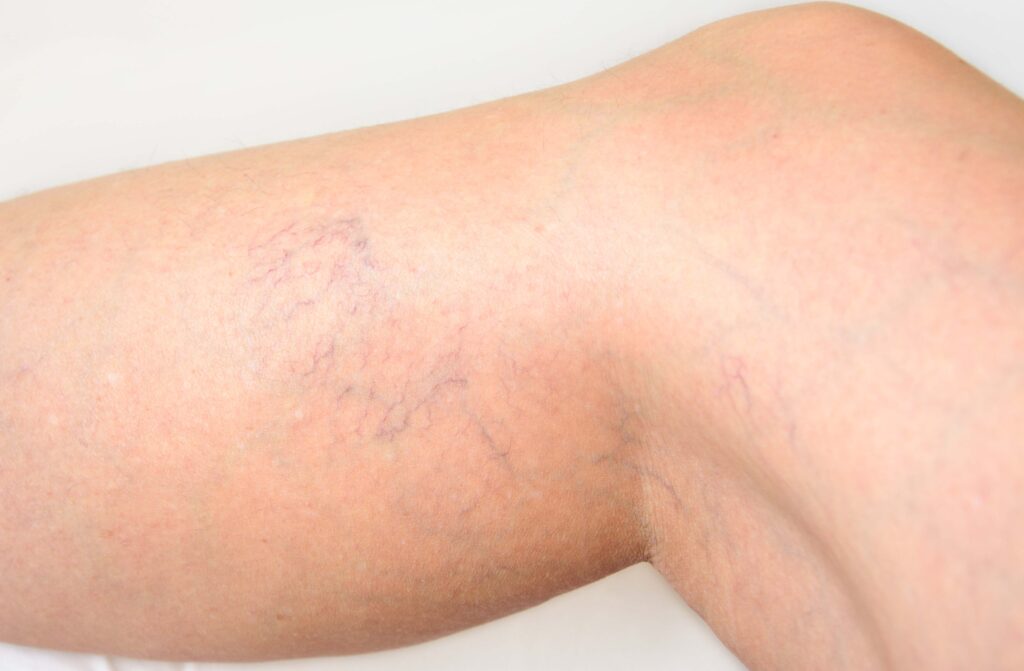Spider Veins

What To Know About Spider Veins
What Are Spider Veins?
Spider veins, also known as telangiectasias, are small, dilated blood vessels that appear near the surface of the skin. They can be red, blue, or purple and often resemble a spider web or tree branches, hence their name. These veins commonly appear on the legs and face, affecting both men and women.
Causes of Spider Veins
Spider veins develop due to various factors, including:
- Genetics: A family history of spider veins increases the likelihood of developing them.
- Hormonal Changes: Pregnancy, menopause, and the use of birth control pills can contribute to the formation of spider veins.
- Prolonged Standing or Sitting: Occupations or lifestyles that require long periods of standing or sitting can increase pressure in the veins.
- Age: The risk of spider veins increases as we age, due to the natural weakening of the veins and valves.
- Sun Exposure: Excessive sun exposure, especially on fair-skinned individuals, can lead to spider veins on the face.
Symptoms of Spider Veins
While spider veins are often a cosmetic concern, they can sometimes cause discomfort, including:
- Aching or burning sensations
- Throbbing or cramping in the legs
- Itching around the affected area
- Swelling in the legs
Sclerotherapy as a Treatment for Spider Veins
Sclerotherapy is one of the most effective ways of dealing with troublesome spider veins.
These networks of tiny red, blue, or purple veins look like spider webs, which is where they get their name. Spider veins can develop anywhere but most likely appear on your face and legs. They’re very common, especially in older people.
In general, spider veins aren’t dangerous, but they can be unsightly. They form when blood gathers in the tiny capillaries (blood vessels) just under your skin. Spider veins may be an early sign of vein disease and could indicate you’re at risk of developing varicose veins in the future.
If you would like to remove these unattractive skin blemishes, sclerotherapy could be one of your best options.
What Does Sclerotherapy Involve?
Sclerotherapy is a straightforward in-office procedure. It involves injecting a liquid or foam into the spider veins that irritates them and causes them to collapse. The liquid or foam sclerosant isn’t harmful to your body and naturally disappears after treatment.
After collapsing, the spider veins close down, and blood can no longer get through. This isn’t a problem, as you have many other blood vessels it can use. The treated veins gradually break down and your body disposes of the remains, so there’s no trace of the spider vein pattern.
Sclerotherapy typically causes no pain and only minimal discomfort. You might like to have some numbing cream at the injection site, but otherwise, you don’t need any anesthesia.
What Happens After My Sclerotherapy Treatment?
After your sclerotherapy treatment, you might need to wear bandages for a day or two, followed by a compression hose for a couple of weeks to support the treated veins.
Sclerotherapy requires very little downtime. After your treatment, you can continue with your day as normal; just avoid any strenuous activities in the first week.
You may only need one sclerotherapy treatment, but extra sessions might be necessary if your spider veins are extensive.
Service Available at the Following Locations
Healthy Skin Starts With Us
